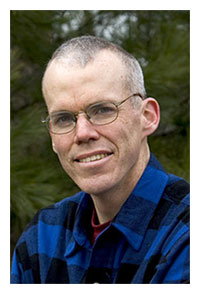The situation in the Philippines – by Bill McKibben
 Friends,
Friends,
Last week, Typhoon Haiyan hit the Philippines — and left a path of destruction and tragedy in its wake. More than 10,000 people are feared dead.
Lines of communication are in still in chaos, but we managed to get in touch with Zeph, our amazing 350 Southeast Asia Coordinator in the Philippines. Here’s what she just emailed to our team:
“This lends urgency to our work. I think we need to be twice as strong as Typhoon Haiyan.”
If we need to be twice as strong, let’s do two things immediately:
1) Raise some money for direct relief to those in need.
These are our brothers and sisters in this movement. Below this email are some pictures from 350 actions across the islands over the years. This storm is a blow to a place already reeling from the effects of climate change. Metro Manila has seen repeated flooding from milder storms; there’s been a severe outbreak of dengue fever this year in the Philippines.
Among the pictures below you’ll see a group of volunteer 350 activists from Tacloban, one of the cities most ravaged by Haiyan. We don’t know the fate of all of our friends there, but we do know they need serious help now — so please do send what you can through direct relief organizations by clicking here.
Governments are meeting in Warsaw the next two weeks for the annual UN climate negotiations. This ritual has dragged on for years without conclusion, largely because the great powers have done so little. On days like these, their inaction amounts to mockery. So we’ve setup a page where you can add your name to a petition that our staff will hand-deliver to negotiators at the UN climate summit. In short, we need to let world leaders know that their inaction is wrecking the world, and the time is long past for mere talk — we need action, and we need it now.
Today at the UN climate summit, Mr. Yeb Sano, the lead negotiator of the Philippines, urged his fellow negotiators to take a bold stance. During the opening session of the summit, he committed to fas tthroughout the two weeks of the talks until countries make real commitments around climate finance and reducing emissions.
Sano said, “Let Poland, let Warsaw, be remembered as the place where we truly cared to stop this madness. Can humanity rise to this occasion? I still believe we can.”
I still believe we can too. Please sign on and donate whatever you can to the relief effort.
Many thanks,
Bill McKibben for 350.org
Newspaper quotes:
The Guardian, 12 November – John Vidal& Adam Vaughan
“The Philippines government has firmly connected the super typhoon Haiyan with climate change, and urged governments meeting in Poland on Monday to take emergency action to resolve the deadlocked climate talks.
We cannot sit and stay helpless staring at this international climate stalemate. It is now time to take action. We need an emergency climate pathway,” said Yeb Sano, head of the government’s delegation to the UN climate talks, in an article for the Guardian, in which he challenged climate sceptics to “get off their ivory towers” to see the impacts of climate change firsthand.”
Reuters, 10 November – Alister Doyle
“Environmentalists warned about the dangers of delaying action to avert more floods, heatwaves and rising sea levels.
They point to super typhoon Haiyan, which killed more than 10,000 people in the Philippines last week, as a reminder of the risks of extreme weather. A U.N. scientific panel says cyclones may become more intense in some regions by 2100 as the planet warms…In September, the U.N. panel of climate experts raised the probability that mankind is the main cause of recent warming to 95 percent or “extremely likely” from 90 percent “very likely”.”
Sydney Morning Herald, 11 November – Peter Hannam
“Extreme storm events such as super typhoon Haiyan, which wreaked havoc in the Philippines on Friday, are more likely in the future as the build-up of greenhouse gases warms the planet, scientists say.
Winds from typhoon Haiyan were estimated to have been 314km/h or higher when the monster storm made landfall on the Philippine island of Samar. That speed, if confirmed, would make it the strongest storm on record, exceeding hurricane Camille, which hit Mississippi in the US in 1969, according to US meteorologist Jeff Masters’ WunderBlog.”




No comments yet